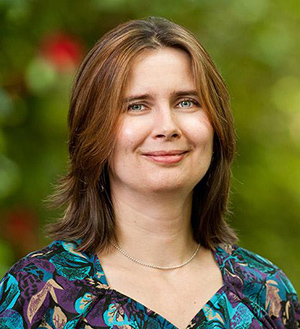Trio Receives Prestigious Scialog Award To Study Collective Cancer Cell Dynamics
A cancerous tumor has cells that act as leaders as the tumor invades and degrades the body’s extracellular matrix, a collection of molecules secreted by healthy cells that provides for their structural and biochemical support. Little is known about how cancer cells become leader cells or how a hierarchy is established as the invasion moves forward.
Three scientists — Michelle Digman, University of California Irvine, Steve Pressé, Arizona State University, and Bo Sun, Oregon State University – have formed a collaboration to screen novel metabolic and rheological (i.e., flow) markers within an invading group of cancer cells. Specifically they aim to determine the probabilities of a cell belonging to a certain type within the invading tumor, and also determine how to eliminate leading cells, as well how new leaders are “elected.”
Among the three scientists, who have not worked together before, there is considerable expertise in live cell imaging and analysis, mathematical analysis and statistical modeling, and tumor patterning and cancer migration.
Digman, Presse and Sun formed their collaboration at the most recent Scialog: Molecules Come to Life conference organized by the private foundation Research Corporation for Science Advancement (RCSA).
Scialog is a combination of “science” plus “dialog.” The unique conference encourages early career scientists to form multidisciplinary teams to identify and tackle critical research challenges. The program is designed to fund highly innovative, but untested, ideas with the potential for high impact on challenges of global significance.
“Funding early stage, potentially high-impact research of this nature can be riskier than funding well-established lines of research,” notes RCSA Senior Program Director Richard Wiener, “but it represents an approach to accelerating the pace of breakthrough scientific discoveries.”
The $168,750 in funding for the trio’s research is provided by the Gordon and Betty Moore Foundation, which is co-sponsoring Scialog: Molecules Come to Life.
###
About Research Corporation for Science Advancement (RCSA):
Founded in 1912, Research Corporation for Science Advancement (www.rescorp.org) is the second-oldest foundation in the United States (after the Carnegie Corporation) and the oldest foundation for science advancement. RCSA is a leading advocate for the sciences and a major funder of scientific innovation and of research in America’s colleges and universities.
Media Contact:
Research Corporation for Science Advancement
Dan Huff
520-571-7817
dhuff@rescorp.org







